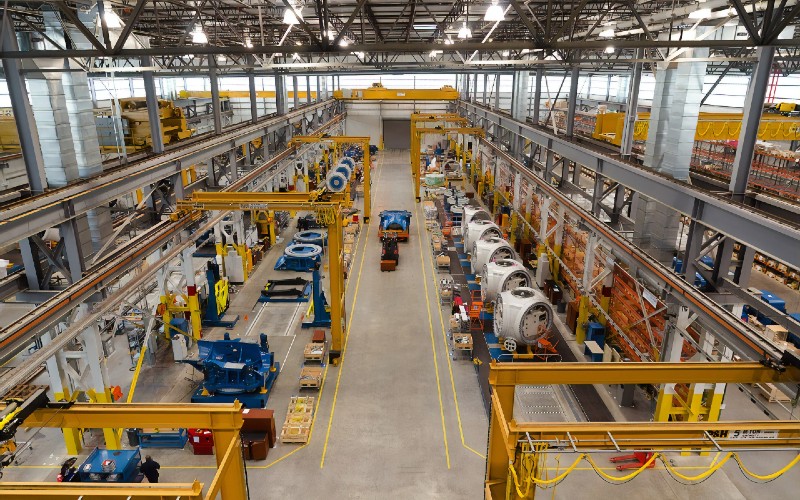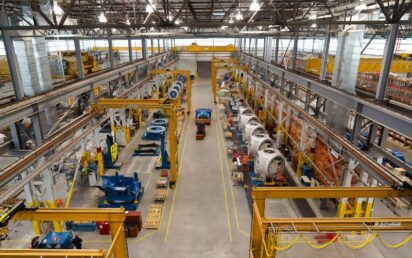Making parts faster and with better quality is important for many workshops today. As demand grows and costs rise, teams need ways to work smarter. Using better tools and methods can help save time, reduce waste, and improve results.
This article shares five useful ways to improve how metal and other materials are shaped or joined. These ideas are already helping many businesses stay ahead. You don’t need complex machines or big changes—just the right approach for your work.
-
High-Speed Metal Processing with Plasma Cutting
One of the first steps in improving how parts are made is choosing a cutting method that works in many situations. Plasma cutting is one option that offers speed, accuracy, and reliability. It uses a stream of superheated gas to cut through conductive materials like steel, stainless steel, and aluminum. The process is known for producing smooth, clean edges and reducing the need for extra finishing. It works well on both thin sheets and thick plates, which makes it useful in many industries, from repair shops to manufacturing plants.
Modern plasma systems come in handheld or machine-operated forms, giving teams more flexibility in how they work. Having the right plasma cutter can improve job speed and reduce mistakes. Many systems also include software that adjusts settings like gas preflow, arc height, and cut speed automatically. If you’re looking to learn more, there are detailed online resources that explain how these systems work and how to choose the best fit for your needs.
-
Laser Cutting for Intricate and High-Precision Fabrication
Laser tools are great for cutting fine shapes with smooth edges. These systems use light beams to create neat lines and curves. They are helpful for parts that need tight shapes, like signs or small machine components. Because lasers don’t touch the metal directly, the results are cleaner and more stable.
Many industries choose this approach for items made from thinner sheets. It works well for both simple and detailed jobs. Laser setups are often part of automated systems, so they’re good for quick and repeated tasks. They also waste less material. This makes them a smart option for shops that need speed and control in daily work.
-
Robotic Welding for Scalable and Repeatable Assembly
Welding with machines helps shops do more in less time. Robotic systems follow paths set by programs. They can make many of the same joins without changing speed or aim. This keeps each weld clean and steady. It also lowers the chance of mistakes or weak points.
These systems are safe to use and easy to monitor. Once set up, they don’t need much input from workers. This lets teams focus on other jobs. Robotic setups work well for tasks that repeat often. They also improve safety by reducing the need for hands-on heat work. As a result, teams save time and lower risks on the floor.
-
CAD/CAM Software Integration for End-to-End Automation
Software tools help teams plan and shape each step of the build. With CAD/CAM programs, designs turn into work plans without extra steps. These systems set the cut paths, spacing, and part layout. They help reduce waste by placing each piece in the best spot on the sheet.
Using these tools makes the setup faster. They also reduce the number of manual choices an operator has to make. When paired with cutting or welding machines, they give better results in less time. This kind of system is common in shops that need to do more with fewer resources. It keeps jobs on time and helps reduce scrap.
-
Waterjet Cutting for Cold, Distortion-Free Fabrication
This method uses strong streams of water, sometimes mixed with grit, to slice through material. It’s a cold process, so there’s no heat or burn marks. That makes it useful when the shape or strength of the metal must stay the same. It’s also safe for items that would bend or melt under heat.
Waterjets can work on many surfaces, from metal to stone or even glass. They’re helpful when sharp lines or special patterns are needed. This method is often used in industries that demand smooth finishes without damage. It’s also good for thick or layered parts, where heat-based methods may fall short.
Conclusion
Shops today need methods that help them work smarter, not harder. Each of the five techniques above offers better control, cleaner results, and lower costs. Whether it’s cutting with heat, water, or lasers—or joining parts with automation—each step matters. Tools like CAD/CAM software help make the whole system flow better. Choosing the right mix of tools can make a big difference in how well a job is done.


